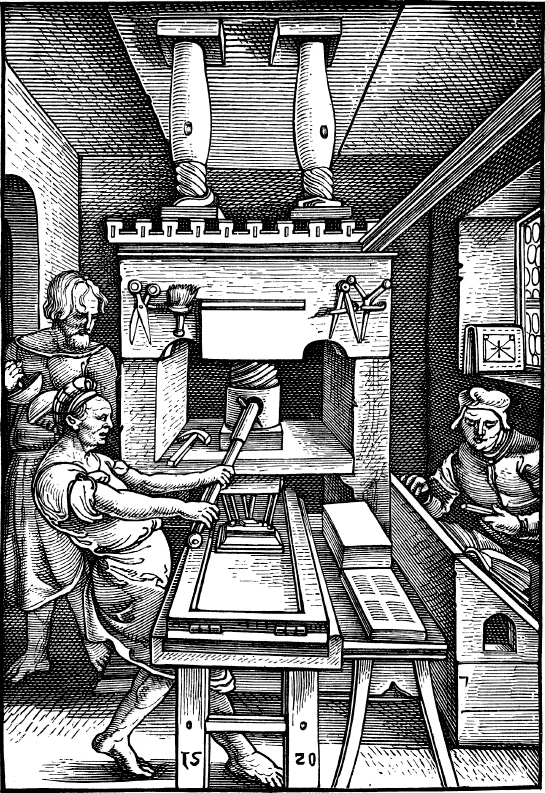Exploring American Histories: Printed Page 17
Exploring American Histories, Value Edition: Printed Page 16
Mapmaking and Printing

Waldseemüller’s 1507 map reflected the expanding contacts among Europe, Africa, and the Americas. Over the following decades, as ships from Europe sailed back and forth across the Atlantic, cartographers charted newly discovered islands, traced coastlines and bays, and situated each new piece of data in relation to lands already known.
The dissemination of geographical knowledge was greatly facilitated by advances in information technology. The Chinese had developed a form of printing with wood blocks in the tenth century, and woodcut pictures appeared in Europe in the fifteenth century. In the 1440s, German craftsmen invented a form of movable metal type in which each letter was created in a separate mold. This allowed printers to rearrange the type for each page and create multiple copies of a single manuscript more quickly and more cheaply than ever before. Between 1452 and 1455, Johannes Gutenberg, a German goldsmith, printed some 180 copies of the Bible with movable type. Although this was not the first book printed using the new system, Gutenberg’s Bible marked a revolutionary change in the production and circulation of written texts.
Innovations in printing helped publicize Portuguese and Spanish explorations, the travels of European adventurers, and the atlases created by Waldseemüller and other cartographers. Italian craftsmen contributed by manufacturing paper that was thinner and cheaper than traditional vellum and parchment. Books were still expensive, and they could be read only by the small minority of Europeans who were literate. Still, mechanical printing rapidly increased the speed with which knowledge was circulated, allowing a German mapmaker like Waldseemüller to read the journals of the Italian mariner Vespucci. Of course, not everything that was printed was accurate, but the ability to exchange ideas encouraged their expression and ensured the flow of information among scholars and rulers across Europe.
The peoples of the Americas had their own ways of charting land, waterways, and boundary lines and for circulating information. The Maya, for instance, developed a system of glyphs—images that represented prefixes, suffixes, numbers, people, or words. Scribes carved glyphs into large flat stones, or stela, providing local residents with histories of important events. In settled farming villages, this system communicated information to a large portion of the population. But it could not serve, as printed pages did, to disseminate ideas more widely. Similarly, the extant maps created by the Maya, Aztecs, and other native groups tended to focus on specific locales. Still, we know that these groups traded across long distances, so they must have had some means of tracing rivers, mountains, and villages beyond their own communities.
